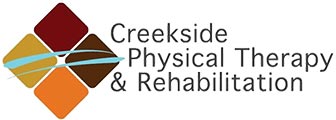What are the Peroneal Muscles?

The peroneal muscles are a group of muscles found in the lateral and anterior compartment of the lower leg, and include the peroneus longus, peroneus brevus, and peroneus tertius. They are also known as the fibularis longus, fibularis brevus and fibularis tertius. These muscles are important for providing stability to the lateral ankle and are often injured when the ankle is sprained. The peroneus longus and brevis muscles in particular play an important role in stabilizing the ankle in this way (3).
There are several ways these muscles and tendons can become damaged, with each potentially causing pain, dysfunction, and instability at the ankle.
How Ankle Sprains Affect the Peroneal Muscles
Lateral ankle sprains are when the ankle rolls outward in relation to the foot. This is one of the most common type of musculoskeletal injury (4), and can damage the structures on the outside of the ankle, including the peroneal muscles and tendons. The peroneal muscles and tendons are damaged because when the ankle begins to roll in this manner, they are the first muscles to contract and attempt to prevent the unwanted movement (3). With recurrent sprains, the muscles become slower to react in preventing the motion, which increases the likelihood of re-injury - as high as 40% (4).
Peroneal Tendon Pain
Peroneal tendinopathies are one such way these muscles and their tendons can be damaged. In general, tendinopathies are chronic conditions resulting from microtrauma and poor healing of the tendons of muscles (1). This can lead to thickening of the tendon, degeneration of the tendon’s structure, swelling, and pain that increases with activity and improves with rest (3). Common mechanisms for injury include errors in training such overtraining, increasing activity levels too quickly, and inadequate rest (1).
Physical Therapy for Peroneal Tendinopathy and Pain
In general, peroneal tendinopathies are treated with rest, activity management/modification, orthotics, rear foot stabilization, and in severe cases, immobilization (3). Physical therapy can be effective in strengthening the weakened muscles & rebuilding a healthy tendon. Hands on treatment in physical therapy, such as ASTYM, IASTM or Graston are effective at decreasing tendon related pain during the recovery process. These conditions are often treated well conservatively and do not require surgical intervention. However, the rate of re-injury can be common, with up to 40% of conditions returning after 2 years (1).
Peroneal Tendon Tears and Treatment
Another type of potential injury to the peroneal muscles and tendons are tendon tears. These tears are usually found in the peroneus brevis, the smaller of the two peroneal muscles that runs the outside of the lower leg (2). Common mechanisms for this type of injury include lateral ankle sprains, forceful contraction of the muscles, subluxation of the tendons, and mechanical compression of the tendons against the fibula (2,6).

These injuries can be treated conservatively, but depends on the extent of the damage. Typically treatment will begin with immobilization of the ankle for 4-8 weeks (2), followed by a rehabilitation program including strengthening and coordination, among other areas of focus. Conservative treatment for these injuries can take up to 4-6 months (6). If pain, instability, and loss of function persist however, then surgery may be indicated to restore the integrity of the tendon.
Peroneal Tendon Dislocation and Subluxation
Peroneal subluxation or dislocation is less common, but can also result in pain and loss of function in the lateral ankle. These injuries are also usually the result of ankle sprains in which the structures of the lateral ankle are damaged significantly enough so that the peroneal tendons do not tract appropriately and can subluxate or dislocate (3,5). These types of injuries often do not respond well to conservative treatment resulting in the need for surgical repair (3,5).
How Physical Therapy can Help Your Lower Leg & Peroneal Tendon Pain
Our physical therapists at Creekside specialize in treating foot and ankle injuries. They will assess your foot & ankle as well as your entire kinetic chain to provide a whole-body solution to your peroneal tendon pain. They will work with you to develop a plan to return to walking, standing & running without pain. This plan often includes:
- Kinetic chain and gait assessment: The entire kinetic chain affects the amount of work that the peroneal tendons have to perform. By improving the efficiency of your walking & movement patterns, the less work the painful tendon has to do.

- Hands on treatment to decrease pain:
- IASTM and Graston are effective techniques at improving muscle & fascial mobility throughout the lower leg. This can decrease how much 'tightness' and pain you feel with walking & moving the ankle.
- MFD helps to increase the mobility of the layers of connective tissue through the lower leg. This decompressive technique can improve the tendon's mobility and decrease tightness & pain.
- Exercise to strengthen the tendon: You must strengthen the peroneal tendons to fully recover from a peroneal tendinopathies or tears. Your therapist will develop a tendon strengthening program to restore your tendon's health.
- Blood-Flow Restriction (BFR) Exercise Therapy: BFR simulates higher intensity tendon strengthening exercises without requiring high intensity tendon loading. It can increase muscle and tendon strength faster than traditional exercise (and oftentimes with less exercise-related pain as well.
- Taping for stability: Taping interventions to improve foot and ankle alignment improves the efficiency of your gait and foot movements. This can result in decreased peroneal tendon pain.
Our experienced physical therapists will be able to guide you in your recovery and provide you with the resources to reduce your pain, improve function and stability in the ankle, and return to the activities you love most.
Creekside Physical Therapy Now Has 3 Convenient Locations in Portland, Oregon
Message us now to get scheduled with one of our skilled Physical Therapists at any of our locations:
- Tigard - Oleson: 9115 SW Oleson Rd, Ste. #206 Portland, Oregon, 97223
- Tigard - Locust: 9445 S Locust St., Tigard, Oregon, 97223
- Cedar Mill: 12400 NW Cornell Rd, Ste. #200 Portland, Oregon, 97229
References
- Burton I. Autoregulation in Resistance Training for Lower Limb Tendinopathy: A Potential Method for Addressing Individual Factors, Intervention Issues, and Inadequate Outcomes. Front Physiol. 2021 Aug 5;12:704306. doi: 10.3389/fphys.2021.704306. PMID: 34421641; PMCID: PMC8375597.
- Danna NR, Brodsky JW. Diagnosis and Operative Treatment of Peroneal Tendon Tears. Foot Ankle Orthop. 2020 Apr 9;5(2):2473011420910407. doi: 10.1177/2473011420910407. PMID: 35097372; PMCID: PMC8697126.
- Davda K, Malhotra K, O'Donnell P, Singh D, Cullen N. Peroneal tendon disorders. EFORT Open Rev. 2017 Jun 22;2(6):281-292. doi: 10.1302/2058-5241.2.160047. PMID: 28736620; PMCID: PMC5508858.
- Kobayashi T, Tanaka M, Shida M. Intrinsic Risk Factors of Lateral Ankle Sprain: A Systematic Review and Meta-analysis. Sports Health. 2016 Mar-Apr;8(2):190-3. doi: 10.1177/1941738115623775. PMID: 26711693; PMCID: PMC4789932.
- Niemi WJ, Savidakis J Jr, DeJesus JM. Peroneal subluxation: a comprehensive review of the literature with case presentations. J Foot Ankle Surg. 1997 Mar-Apr;36(2):141-5. doi: 10.1016/s1067-2516(97)80061-0. PMID: 9127219.
- Walt J, Massey P. Peroneal Tendon Syndromes. 2022 May 29. In: StatPearls [Internet]. Treasure Island (FL): StatPearls Publishing; 2022 Jan–. PMID: 31335074.

